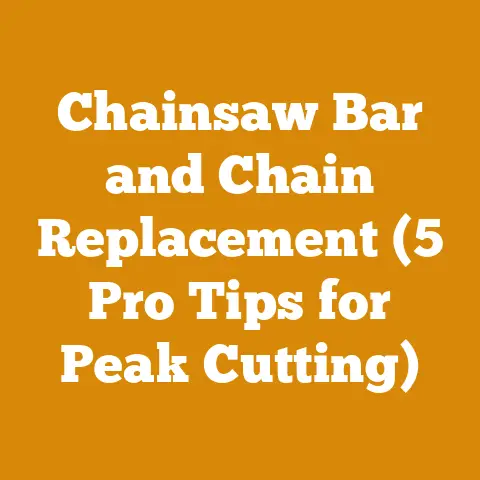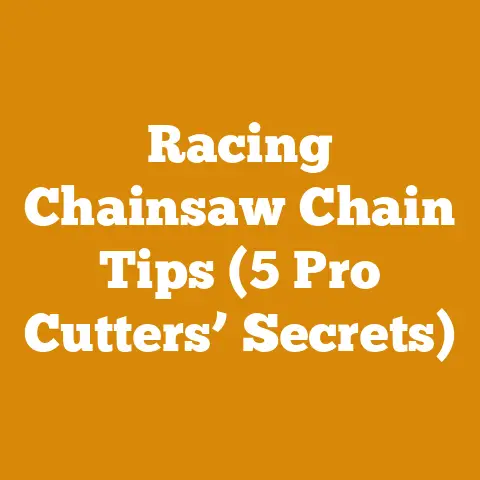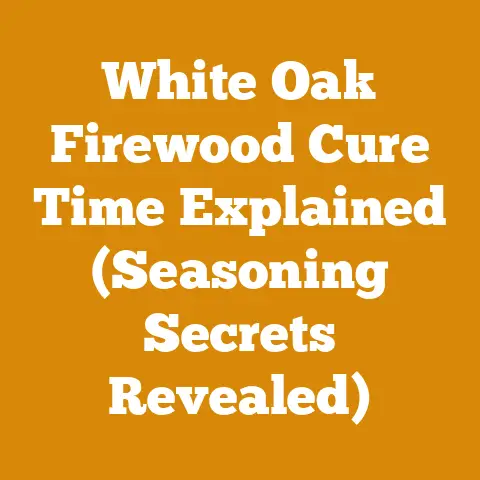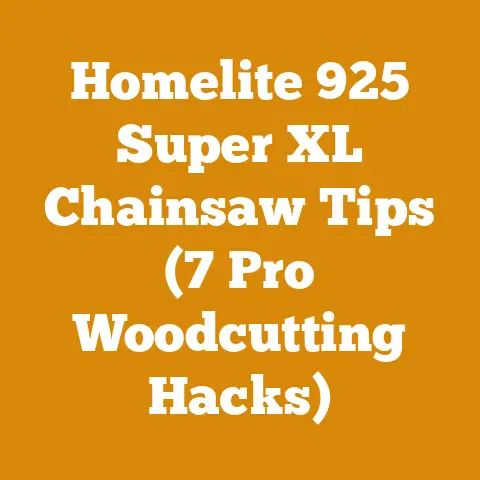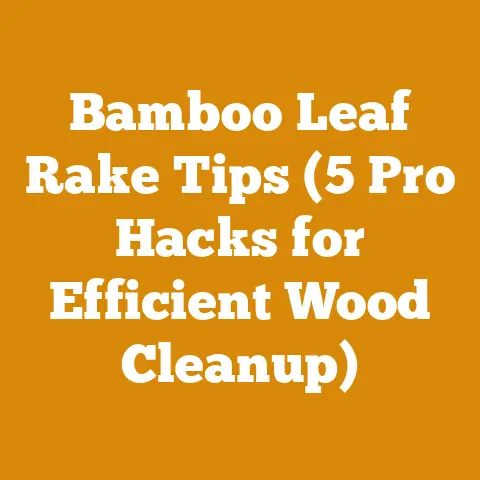Pressure Wash Grill Grates (5 Proven Wood-fired BBQ Cleaning Hacks)
Maintaining a wood-fired BBQ is often seen as a chore, but it doesn’t have to be. The flavor that wood imparts on grilled food is unparalleled, and I’m here to tell you that keeping your grill grates clean is far easier than you might think. The key is understanding a few proven techniques. I’ve spent years experimenting with different methods, from simple elbow grease to leveraging the power of pressure washers. I’ve also learned to appreciate the subtle differences each cleaning method brings to the overall grilling experience. In this article, I’ll share my top five wood-fired BBQ cleaning hacks, including how to use a pressure washer effectively, so you can spend less time cleaning and more time enjoying delicious, wood-fired meals.
Pressure Washing Grill Grates: A Deep Dive into Wood-Fired BBQ Cleaning Hacks
Why Clean Your Grill Grates?
Before diving into the how-to, let’s address the why. Dirty grill grates aren’t just unsightly; they can negatively impact your cooking.
- Flavor: Old food residue carbonizes and imparts a bitter, unpleasant taste to your food.
- Health: Built-up grease and grime can harbor harmful bacteria.
- Performance: Dirty grates reduce heat transfer, leading to uneven cooking and longer grilling times.
- Safety: Excessive grease buildup is a fire hazard.
Understanding the Enemy: Grill Grime Composition
To effectively combat grill grime, you need to know what you’re up against. Grill grime is a complex mixture composed of:
- Carbonized Food Residue: Proteins and carbohydrates from cooked food.
- Grease and Fats: Rendered fats from meats and oils used in marinades.
- Ash and Soot: Byproducts of wood combustion.
- Mineral Deposits: From water used in grilling or cleaning.
This complex mixture requires a multi-pronged approach to remove effectively.
Hack #1: The Pressure Washer Power Play
Pressure washing grill grates is a highly effective method for removing stubborn grime, especially after a heavy grilling session. Here’s how I approach it:
Step 1: Gather Your Gear
- Pressure Washer: A pressure washer with a pressure rating between 2000 and 3000 PSI (pounds per square inch) is ideal. Lower pressure might not be effective, while higher pressure could damage the grates, especially if they are porcelain-coated. I personally use a gas-powered pressure washer with adjustable nozzles, as it gives me more control over the cleaning process. Over the years, I’ve found that electric pressure washers are less reliable and powerful for tough cleaning tasks.
- Nozzles: Use a wide-angle nozzle (e.g., 40-degree or 25-degree) to avoid damaging the grates. A narrow-angle nozzle (e.g., 0-degree or 15-degree) can etch or remove coatings. For tougher spots, I sometimes use a rotary nozzle, but always with caution and at a distance.
- Safety Glasses: Protect your eyes from flying debris. This is non-negotiable. I’ve seen too many people skip this step and regret it.
- Gloves: Protect your hands from grime and the force of the water. I prefer heavy-duty rubber gloves.
- Protective Clothing: Wear old clothes or a waterproof apron. You will get wet and dirty.
- Grill Brush (Optional): For pre-scrubbing stubborn areas.
- Mild Dish Soap (Optional): For extra cleaning power.
Step 2: Pre-Soak (Optional, But Recommended)
If your grates are heavily soiled, pre-soaking them can significantly improve the pressure washing results.
- Remove the Grates: Take the grates out of the grill and place them on a flat, stable surface like a driveway or patio. I usually lay down a tarp to protect the surface underneath.
- Apply Soap (Optional): Dilute a small amount of mild dish soap in a bucket of warm water.
- Soak: Using a sponge or brush, apply the soapy water to the grates, ensuring they are thoroughly coated. Let them soak for at least 30 minutes, or even longer for heavily soiled grates. I’ve found that overnight soaking yields the best results for really stubborn grime.
Step 3: Pressure Washing Technique
- Set Up the Pressure Washer: Connect the pressure washer to a water source and plug it in (if electric) or start the engine (if gas-powered).
- Choose the Right Nozzle: Attach the wide-angle nozzle (40-degree or 25-degree).
- Test the Pressure: Before aiming at the grates, test the pressure on a non-critical surface to ensure it’s not too strong. Start with the lowest pressure setting and gradually increase it until you find the optimal cleaning power.
- Pressure Wash: Hold the pressure washer wand about 12-18 inches away from the grates. Use a sweeping motion to clean the entire surface, paying extra attention to heavily soiled areas. I like to work in overlapping passes to ensure complete coverage.
- Flip and Repeat: Flip the grates over and repeat the pressure washing process on the other side.
- Rinse Thoroughly: Once you’ve cleaned both sides, rinse the grates thoroughly with clean water to remove any remaining soap or debris.
Step 4: Post-Wash Inspection and Drying
- Inspect: Carefully inspect the grates for any remaining grime. If necessary, repeat the pressure washing process or use a grill brush to scrub stubborn areas.
- Dry: Allow the grates to air dry completely before placing them back in the grill. I often use a clean towel to wipe them down and speed up the drying process. Alternatively, you can place the grates back in the grill and turn it on low heat to dry them.
Pressure Washing: A Case Study
A few years ago, I was tasked with cleaning a heavily used grill at a local BBQ restaurant. The grates were caked with years of accumulated grease and carbonized food. I started by soaking the grates overnight in a degreasing solution. The next day, I used my pressure washer with a 25-degree nozzle and a pressure of 2500 PSI. It took several passes, but the pressure washer completely removed the stubborn grime, restoring the grates to near-new condition. The restaurant owner was amazed by the results and the time saved compared to traditional scrubbing methods.
Strategic Advantage of Using a Pressure Washer
- Efficiency: Pressure washing is significantly faster than manual scrubbing.
- Effectiveness: It can remove stubborn grime that is difficult to remove with a brush.
- Accessibility: It can reach tight spaces and crevices that are hard to access manually.
Technical Details
- Cost of Pressure Washer: $100 – $500 (depending on type and features)
- Water Consumption: 1-2 gallons per minute
- Time Required: 15-30 minutes per grate (depending on soil level)
- Skill Level: Beginner
Hack #2: The Classic Grill Brush and Elbow Grease
While pressure washing is efficient, sometimes the old-fashioned grill brush is all you need.
Step 1: Heat it Up
The key to effective grill brush cleaning is heat. After grilling, while the grates are still hot (but not scalding!), use a sturdy grill brush to scrub away loose debris.
Step 2: Choose Your Brush Wisely
There are two main types of grill brushes:
- Wire Brushes: Effective for removing tough grime, but bristles can break off and end up in your food. I’ve had a few close calls myself, finding stray bristles on cooked meat. Now I inspect the grates carefully after using a wire brush.
- Bristle-Free Brushes: Safer than wire brushes, as there are no bristles to worry about. They often use coiled metal or scouring pads to clean the grates.
I now prefer bristle-free brushes for safety reasons. I’ve found that they require a bit more elbow grease, but the peace of mind is worth it.
Step 3: Scrubbing Technique
- Hold the brush at a 45-degree angle to the grates.
- Use firm, even pressure.
- Scrub in the direction of the grates.
- Rinse the grates with water after scrubbing.
Step 4: The Onion Trick (Optional)
Cut an onion in half and rub the cut side over the hot grates. The onion’s natural acids and moisture help loosen grime. I’ve used this trick many times, and it works surprisingly well. Plus, it adds a subtle onion flavor to your next grilling session.
Case Study: The Power of Prevention
I once neglected cleaning my grill for several months, and the grates became incredibly encrusted with grime. I tried everything – pressure washing, heavy-duty grill brushes, even oven cleaner (which I don’t recommend, by the way). Nothing seemed to work. Finally, I resorted to soaking the grates in a lye solution (again, with extreme caution and proper safety measures). It took days of soaking and scrubbing to get the grates clean. This experience taught me the importance of regular cleaning and prevention. Now, I make it a habit to clean my grates after every grilling session.
Strategic Advantage of Grill Brush Cleaning
- Simplicity: Requires minimal equipment and effort.
- Accessibility: Can be done anywhere, anytime.
- Cost-Effective: Grill brushes are relatively inexpensive.
Technical Details
- Cost of Grill Brush: $10 – $30
- Time Required: 5-10 minutes per grate (after each use)
- Skill Level: Beginner
Hack #3: The Steam Cleaning Method
Steam cleaning is a gentle yet effective way to loosen grime without harsh chemicals or abrasive scrubbing.
Step 1: The Foil Ball
Crumple a large sheet of aluminum foil into a ball.
Step 2: Heat and Steam
- Heat the grill to medium-high heat.
- Dip the foil ball in water.
- Use tongs to hold the foil ball and scrub the grates. The steam created by the hot grates will help loosen the grime.
Step 3: Wipe Clean
After steaming, wipe the grates clean with a damp cloth.
Case Study: The Gentle Approach
I once had a friend who was very particular about her grill. She refused to use any harsh chemicals or abrasive brushes on her grates. She swore by the steam cleaning method, and her grates were always spotless. I was skeptical at first, but I tried it myself and was impressed by the results. It’s not as effective as pressure washing for removing heavy grime, but it’s a great option for regular maintenance and gentle cleaning.
Strategic Advantage of Steam Cleaning
- Gentle: Won’t damage delicate grates.
- Chemical-Free: Safe for food and the environment.
- Easy: Requires minimal effort and equipment.
Technical Details
- Cost: Minimal (aluminum foil and water)
- Time Required: 5-10 minutes per grate
- Skill Level: Beginner
Hack #4: The Baking Soda Soak
Baking soda is a natural, non-toxic cleaner that can effectively loosen grease and grime.
Step 1: The Paste
Mix baking soda with water to form a thick paste.
Step 2: Apply and Soak
- Remove the grates from the grill.
- Apply the baking soda paste to the grates, ensuring they are thoroughly coated.
- Let the grates soak for at least 30 minutes, or even overnight for heavily soiled grates.
Step 3: Scrub and Rinse
- Scrub the grates with a grill brush or sponge.
- Rinse thoroughly with water.
Case Study: The Natural Solution
I once had a neighbor who was allergic to many commercial cleaning products. She used baking soda for everything, including cleaning her grill grates. I was surprised by how well it worked. The baking soda paste effectively loosened the grease and grime, and the grates were clean and sparkling after scrubbing.
Strategic Advantage of Baking Soda Cleaning
- Natural: Non-toxic and environmentally friendly.
- Inexpensive: Baking soda is readily available and affordable.
- Effective: Loosens grease and grime without harsh chemicals.
Technical Details
- Cost: Minimal (baking soda and water)
- Time Required: 30 minutes + scrubbing time
- Skill Level: Beginner
Hack #5: The Burn-Off Method
This method involves burning off the grime on the grates using high heat. While effective, it should be done with caution and proper ventilation.
Step 1: Crank Up the Heat
Close the grill lid and turn all burners to high heat.
Step 2: Burn It Off
Let the grill burn for 15-20 minutes. The high heat will carbonize the grime, turning it into ash.
Step 3: Brush and Wipe
- Turn off the grill and let it cool slightly.
- Use a grill brush to remove the ash.
- Wipe the grates clean with a damp cloth.
Safety Considerations
- Never leave the grill unattended while burning off grime.
- Ensure proper ventilation to avoid carbon monoxide buildup.
- Be careful when opening the grill lid, as hot air and flames may escape.
Case Study: The Last Resort
I once inherited a grill that had been neglected for years. The grates were completely covered in thick, hardened grime. I tried all the other cleaning methods, but nothing seemed to work. As a last resort, I used the burn-off method. It was effective in removing the bulk of the grime, but it also damaged the grates slightly. This experience taught me that prevention is always better than cure.
Strategic Advantage of Burn-Off Cleaning
- Effective: Can remove heavily encrusted grime.
- Simple: Requires minimal effort.
Technical Details
- Cost: Gas or charcoal
- Time Required: 15-20 minutes + cooling time
- Skill Level: Beginner (with caution)
Wood Selection and its Impact on Grill Grate Cleanliness
The type of wood you use in your wood-fired BBQ significantly impacts the amount and type of residue that accumulates on your grill grates.
- Hardwoods (Oak, Hickory, Maple): These woods burn hotter and cleaner, producing less creosote and soot. They are my preferred choice for grilling.
- Softwoods (Pine, Fir, Spruce): These woods burn cooler and produce more creosote and soot. I avoid using them for grilling, as they can impart a smoky, resinous flavor to the food and create a sticky residue on the grates.
- Seasoned vs. Green Wood: Seasoned wood has a lower moisture content and burns cleaner than green wood. Green wood produces more smoke and creosote, which can contribute to grime buildup. I always use seasoned wood for grilling.
I once experimented with using green pine wood for grilling (against my better judgment). The results were disastrous. The food tasted like turpentine, and the grates were coated in a thick, black, sticky residue that was incredibly difficult to remove. This experience reinforced the importance of using seasoned hardwoods for grilling.
Firewood Preparation and its Role in Clean Grilling
Proper firewood preparation can also contribute to cleaner grilling.
- Splitting: Splitting firewood allows it to dry faster and more evenly. I use a hydraulic log splitter for larger logs and an axe for smaller pieces.
- Stacking: Stacking firewood properly allows for good air circulation, which promotes drying. I stack my firewood in rows, with spaces between the rows and the ground.
- Drying: Properly dried firewood burns hotter and cleaner, producing less smoke and creosote. I aim for a moisture content of 20% or less before using firewood for grilling.
I’ve found that using properly prepared firewood not only improves the flavor of the food but also reduces the amount of grime buildup on the grill grates.
Chainsaw Use in Firewood Preparation
If you are processing your own firewood, a chainsaw is an essential tool.
- Chainsaw Selection: Choose a chainsaw that is appropriate for the size of the logs you will be cutting. I use a 20-inch chainsaw for most of my firewood processing.
- Safety Gear: Always wear appropriate safety gear when using a chainsaw, including a helmet, eye protection, ear protection, gloves, and chaps.
- Cutting Techniques: Use proper cutting techniques to avoid kickback and other hazards. I always stand to the side of the chainsaw and maintain a firm grip.
I once witnessed a chainsaw accident that could have been avoided with proper safety precautions. The operator was not wearing eye protection and was struck in the face by a piece of flying wood. Fortunately, he was not seriously injured, but the incident served as a reminder of the importance of chainsaw safety.
Log Splitters: Hydraulic vs. Manual
For splitting large quantities of firewood, a log splitter can save a significant amount of time and effort.
- Hydraulic Log Splitters: These splitters use hydraulic pressure to split logs. They are more powerful and efficient than manual splitters. I use a 25-ton hydraulic log splitter for processing large quantities of firewood.
- Manual Log Splitters: These splitters rely on manual force to split logs. They are less expensive than hydraulic splitters but require more physical effort.
I’ve used both hydraulic and manual log splitters, and I can attest to the significant difference in efficiency. A hydraulic splitter can split a cord of wood in a fraction of the time it would take with a manual splitter.
The Importance of Tool Maintenance
Regardless of the cleaning method you choose, maintaining your tools is crucial.
- Grill Brushes: Replace worn-out grill brushes regularly. Inspect wire brushes for loose bristles before each use.
- Pressure Washers: Clean the nozzles and filters regularly to prevent clogs. Store the pressure washer in a dry place to prevent damage.
- Chainsaws: Sharpen the chain regularly and maintain the oil levels. Clean the air filter and spark plug periodically.
- Log Splitters: Check the hydraulic fluid levels and lubricate moving parts regularly.
I once neglected to maintain my chainsaw properly, and it broke down in the middle of a firewood processing session. It cost me time and money to repair the chainsaw, and I learned the importance of regular maintenance.
Strategic Insights for Wood-Fired BBQ Enthusiasts
Beyond the tactical cleaning methods, here are some strategic insights to enhance your wood-fired BBQ experience:
- Invest in High-Quality Grates: Stainless steel or cast iron grates are more durable and easier to clean than cheaper alternatives.
- Use a Grill Cover: A grill cover will protect your grill from the elements and reduce the amount of grime buildup.
- Experiment with Different Woods: Try different types of wood to find your favorite flavor profiles.
- Master Temperature Control: Proper temperature control will help prevent food from burning and creating excessive grime.
- Embrace the Process: Wood-fired BBQ is a labor of love. Enjoy the process of preparing the wood, building the fire, and grilling the food.
Next Steps: Putting These Hacks into Action
Now that you’re armed with these five proven wood-fired BBQ cleaning hacks, it’s time to put them into action.
- Assess Your Grill Grates: Determine the level of grime buildup and choose the appropriate cleaning method.
- Gather Your Supplies: Gather the necessary tools and cleaning supplies.
- Follow the Steps: Follow the step-by-step instructions for your chosen cleaning method.
- Enjoy the Results: Enjoy the delicious, wood-fired flavor of your clean grill.
- Maintain Regularly: Make it a habit to clean your grill grates after each use to prevent grime buildup.
By following these tips, you can keep your wood-fired BBQ grill in top condition and enjoy years of delicious, wood-fired meals. Remember, a clean grill is a happy grill, and a happy grill leads to happy grilling!

